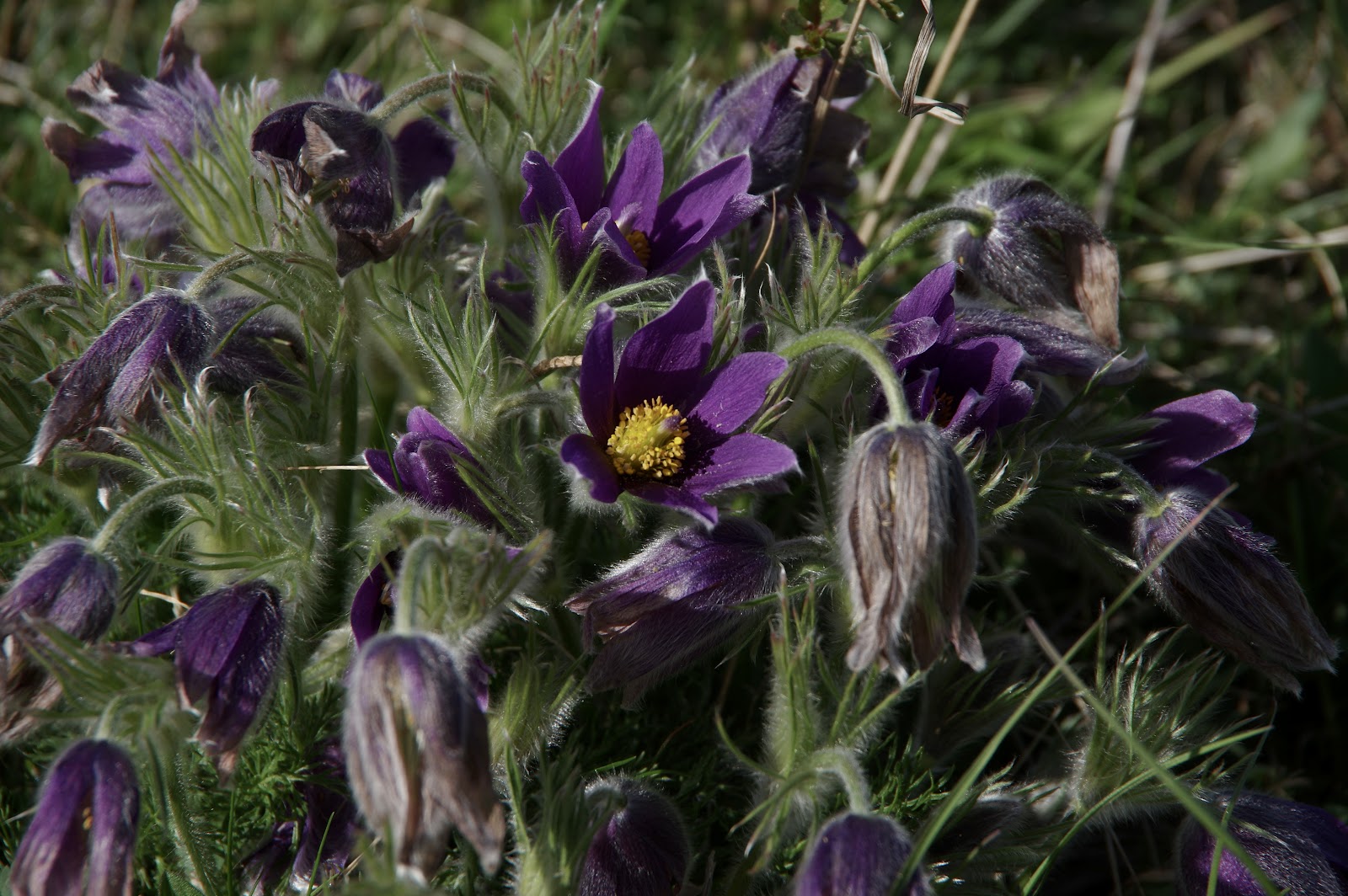Looking from Knocking Hoe towards Knocking Knoll on the horizon, thought to be the remains of a long barrow. Features and artefacts from the general area date from the Iron Age onwards. William Ransom undertook a dig of the Knoll in 1896 and found pieces of pottery believed to be Saxon. NB he it was who commissioned the country house known as Fairfield in Hitchin which is now home to Benslow Music School where I garden regularly.
On the Hoe itself Pasque Flowers (Pulsatilla vulgaris) are starting to bloom. They flower around Eastertime -hence Pasque- though I think their peak is still a week or two away. Knocking Hoe is one of a handful of locations in the UK where they grow in significant numbers.
The day was bright but very breezy. A sloping chalk hillside is their ideal habitat; trying to photograph Pasque Flowers between gusts is a familiar experience. The species used to be designated as Anemone pulsatilla which is apt. Anemos is the Greek word for wind and plants from that genus are commonly known as Windflowers.
Lore has it that Pasque Flowers only grow on ground where Danish blood was shed; Dane's Blood is another colloquial name. They are associated with a number of sites where barrows and earthworks are found. I would think the rational explanation is that these are habitats that have survived to this day by virtue of their history whereas others have been lost.
Or perhaps this fragment of an ancient landscape was indeed soaked with the blood of Danes who fell in battle...


